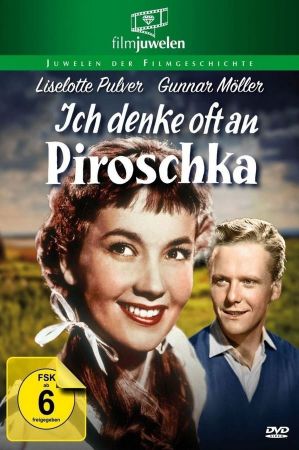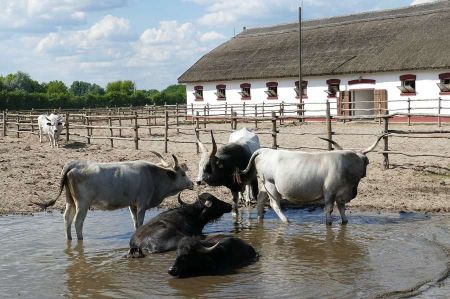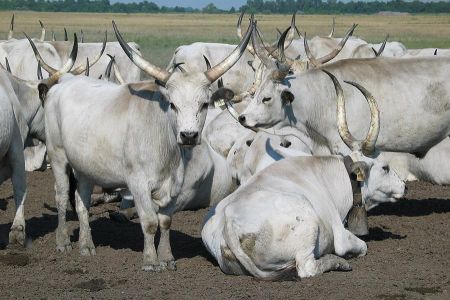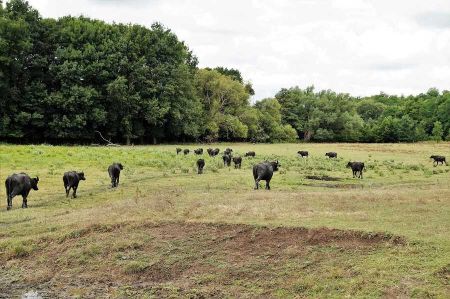Buffalo and gray cattle on the Hungarian Balaton
- Written by Portal Editor
Powerful and impressive are the Hungarian buffalo and gray maidens, with their sometimes magnificent horns, if you dare to get close to them. We were really impressed in Sremska Mitrovica already when it came to the first contact with the magnificent animals in the park Zasavica.
Buffalos and gray cattle have been native to the entire Carpathian Basin for several hundred years, as well as in Serbia, and are among the oldest, also domesticated, animal breeds in Hungary. At the beginning of the 19th century, there were at least 100,000 animals in Hungary that were used as draft animals and for milk and meat production.
Puzta and Buffalo: Romantic cliché in "I often think of Piroshka"
 Sometimes seen in films of the 50s of the last century, the cliché of the Puzta cattle in their environment was fulfilled, as in the film "I often think of Piroshka", where grazing Puzta cattle can be seen in the background. A German film based on the eponymous novel by Hugo Hartung from 1955 with Lieselotte Pulver and Gunnar Möller, in which Andreas, an aged writer, remembers his childhood sweetheart from Hungary during a train ride:
Sometimes seen in films of the 50s of the last century, the cliché of the Puzta cattle in their environment was fulfilled, as in the film "I often think of Piroshka", where grazing Puzta cattle can be seen in the background. A German film based on the eponymous novel by Hugo Hartung from 1955 with Lieselotte Pulver and Gunnar Möller, in which Andreas, an aged writer, remembers his childhood sweetheart from Hungary during a train ride:
As a young man, he travels to Budapest in 1925 as an exchange student on the Danube. On the ship he falls in love with the young pretty Greta. With her he moves through the night through Budapest. The next day, however, he has to take the train to his "holiday family" in a remote place in the Puszta called "Hódmezővásárhelykutasipuszta", Greta, however, to a holiday in Siófok on Lake Balaton. Until he meets with Piroshka ......
Tourist attraction in the 50s and 60s at Lake Balaton
 It was the Count family Festetics, which settled the first buffalo on their pastures next to the wetlands of Kis-Balaton around 1800. Buffaloes get along well with humid wetlands, are relatively undemanding and tolerable, even when living with humans. After the Second World War, however, this changed rapidly, as the buffalo's workforce was increasingly replaced by agricultural machinery and tractors. The few animals that still existed in Kápolnapuszta, near Lake Balaton, were no longer kept as workhorses. Fortunately, they were able to survive as a tourist attraction, to which the above-mentioned film "I often think of Piroschka" has contributed significantly. Inspired by the film, West Germany also began to discover Hungary as a holiday destination.
It was the Count family Festetics, which settled the first buffalo on their pastures next to the wetlands of Kis-Balaton around 1800. Buffaloes get along well with humid wetlands, are relatively undemanding and tolerable, even when living with humans. After the Second World War, however, this changed rapidly, as the buffalo's workforce was increasingly replaced by agricultural machinery and tractors. The few animals that still existed in Kápolnapuszta, near Lake Balaton, were no longer kept as workhorses. Fortunately, they were able to survive as a tourist attraction, to which the above-mentioned film "I often think of Piroschka" has contributed significantly. Inspired by the film, West Germany also began to discover Hungary as a holiday destination.
As early as 1992, Kápolnapuszta, part of the Balaton-Oberland, National Park since 1997, was one of the most unusual animal protection and breeding programs in Hungary. The buffalo population increased from 16 last remaining animals to more than 200. The pasture areas of the reserve were no longer sufficient, and so in 2007 120 animals were relocated to the Puszta near Zalavár, with the existing 80 heifers, the 200-acre meadow areas of the national park.
Protection programs and parks protect the remainders
 In the reserve about 100 buffaloes remained, so a herd of old Hungarian gray cattle was settled next to them. These animals were formerly also used in field work. As they are not suitable for mass production like the buffaloes, despite their excellent meat, the number of 80,000 pieces in the 1940s decreased to just a few hundred throughout Hungary.
In the reserve about 100 buffaloes remained, so a herd of old Hungarian gray cattle was settled next to them. These animals were formerly also used in field work. As they are not suitable for mass production like the buffaloes, despite their excellent meat, the number of 80,000 pieces in the 1940s decreased to just a few hundred throughout Hungary.
Today, buffalo and gray-haired cattle in Hungary will regain their natural habitat and in specially constructed exhibition centers at Lake Balaton the history of the attitude of these animals and the old farming life of Kis-Balaton will be presented.
Please read as well:
Sremska Mitrovica - Beach area at the river Sava
Balaton - Lake Balcsi - more than intermediate destination
